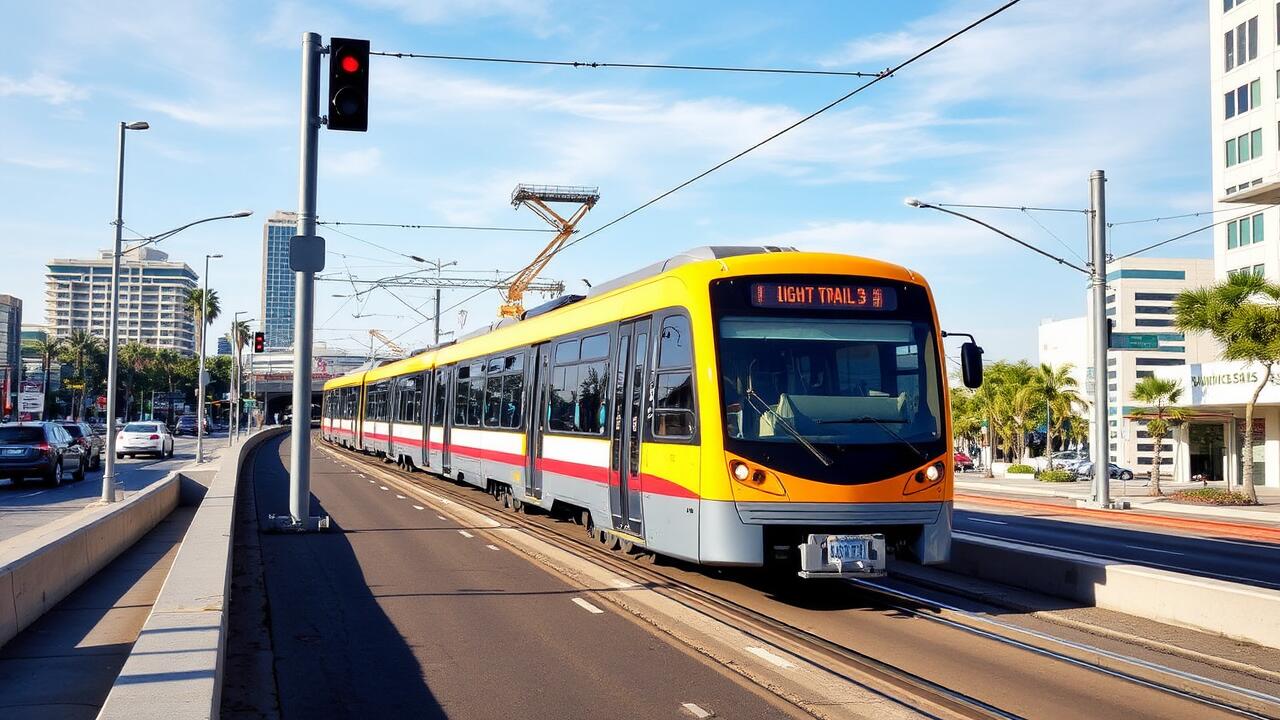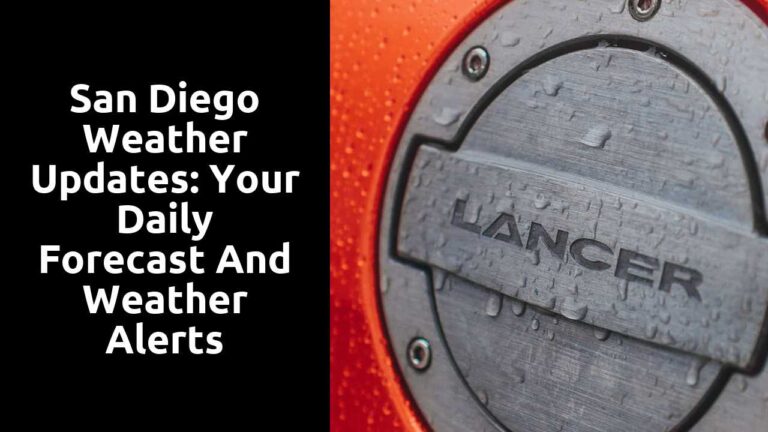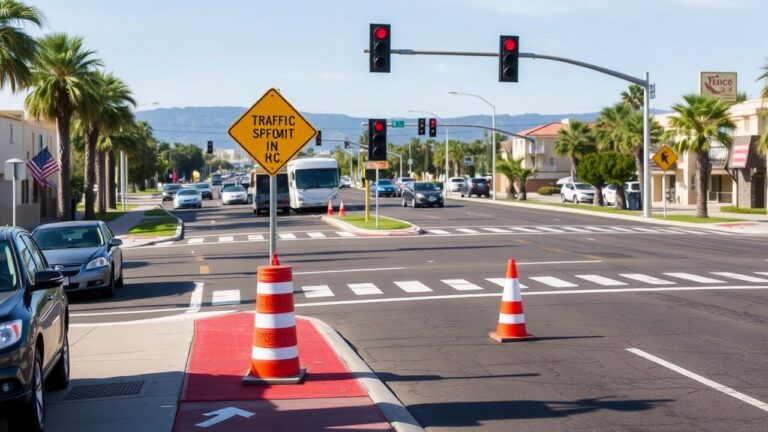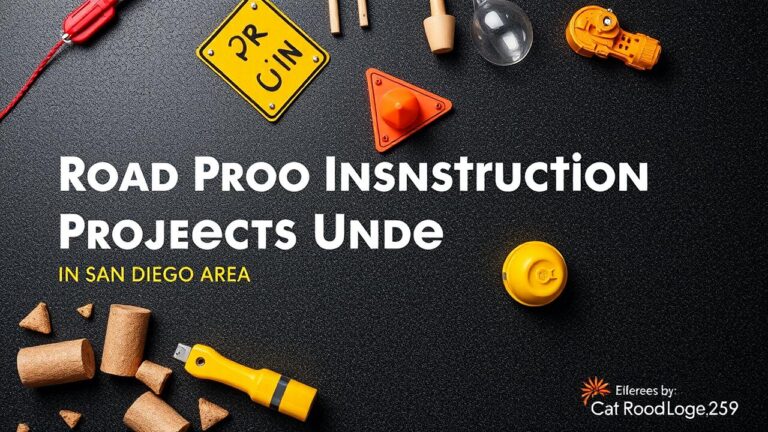Proposed Light Rail System to Alleviate Traffic Congestion in Downtown San Diego
Table Of Contents
Proposed Light Rail System To Alleviate Traffic Congestion In Downtown San Diego | Proposed Light Rail System Aims to Alleviate Traffic Congestion in Downtown San Diego
Key Takeaways
- Summary of the suggested transit solution aimed at reducing traffic issues in the urban core of San Diego.
- Examination of the difficulties posed by traffic congestion in the central area of San Diego.
- Advantages of the proposed transit option for improving transportation and reducing traffic.
- Engagement of the local community and viewpoints from various stakeholders regarding the project.
- Considerations regarding the ecological effects of the proposed transit system.
- Financial aspects and funding requirements associated with the implementation of the project.
- Schedule for the rollout and execution of the proposed transit system.
Proposed Light Rail System To Alleviate Traffic Congestion In Downtown San Diego | Overview of the Proposed Light Rail System
The Proposed Light Rail System to Alleviate Traffic Congestion in Downtown San Diego aims to transform urban mobility through an extensive light rail transit network. This innovative light rail system will connect key areas of the city, reducing reliance on personal vehicles and easing the burden of traffic congestion. By integrating with the existing San Diego Trolley and expanding the services offered by the San Diego Metropolitan Transit System, the project seeks to enhance commuter rail service options for residents and visitors alike. The planned trolley system will provide a reliable and efficient mode of transportation, ultimately contributing to a more sustainable urban environment while addressing the pressing need for alternatives to traditional commuter rail.
Proposed Light Rail System to Alleviate Traffic Congestion in Downtown San Diego | Objectives of the Light Rail Project
The primary objective of the Proposed Light Rail System to Alleviate Traffic Congestion in Downtown San Diego is to create a robust metropolitan transit system that enhances the overall mobility of residents and visitors. By integrating a network of passenger rail options, including trolleys and streetcars, the plan aims to reduce dependence on freeways. This shift is anticipated to alleviate traffic congestion by providing efficient alternatives for commuting throughout downtown San Diego.
Another key goal is to improve the accessibility of public transport for all demographics. The Proposed Light Rail System to Alleviate Traffic Congestion in Downtown San Diego focuses on creating seamless connections between various transit modes, making it easier for passengers to navigate the city. The introduction of this rail system is expected to foster a more sustainable urban environment, promoting the use of public transit over individual vehicle travel, ultimately contributing to reduced traffic woes.
Key Features of the System
The Proposed Light Rail System to Alleviate Traffic Congestion in Downtown San Diego features a comprehensive design that integrates seamlessly with existing transit systems. This innovative transit system will operate alongside current bus routes, enhancing connectivity for commuters. By introducing dedicated rail services and a modern streetcar line, the system aims to streamline travel within the bustling urban landscape. The incorporation of multiple transit vehicles will ensure efficient movement and reduced wait times, catering to the diverse needs of the community.
Transportation planning for this project emphasizes accessibility and frequency of service. Proposed routes will strategically connect key destinations while minimizing overlap with existing trolley lines and heavy rail services. This thoughtful approach aims to accommodate projected ridership growth and further ease congestion. Ultimately, the Proposed Light Rail System to Alleviate Traffic Congestion in Downtown San Diego is designed to provide a reliable alternative to personal vehicles, promoting public transport as a viable option for daily commutes.
Traffic Congestion Challenges in Downtown San Diego
The increasing number of vehicles on the roads has led to significant traffic congestion in downtown San Diego, prompting the need for innovative solutions like the Proposed Light Rail System to Alleviate Traffic Congestion in Downtown San Diego. Commuters frequently experience delays as they navigate congested bus routes and overcrowded freeway access points. The current public transit options, including bus rapid transit and streetcar services, are often overwhelmed, leading to longer wait times and reduced efficiency. The California Department of Transportation recognizes these challenges and supports the introduction of trams that enhance connectivity between major transit centers. This proposed system aims to streamline public transit, providing a reliable alternative for commuters and ultimately easing congestion in the area.
| Transit Option | Current Capacity | Proposed Improvement | Expected Reduction in Congestion (%) |
|---|---|---|---|
| Bus Rapid Transit | 1500 passengers/hour | Increase dedicated bus lanes | 20% |
| Streetcar Services | 800 passengers/hour | Expand route options | 25% |
| Proposed Light Rail System | 2000 passengers/hour | Connect major transit centers | 30% |
| Tram Services | 1000 passengers/hour | Implement new tram lines | 15% |
Current Traffic Patterns and Issues
Traffic congestion in the city of San Diego has become a pressing issue, particularly during peak hours. The existing transit options, including the Coaster commuter rail and regional rail services, struggle to accommodate the increasing number of commuters. The mid-coast corridor transit project has shown promise, but it alone cannot meet the growing demand for efficient transportation options. The Proposed Light Rail System to Alleviate Traffic Congestion in Downtown San Diego aims to provide a rapid transit solution that could significantly improve the flow of people and reduce delays.
Current traffic patterns indicate a reliance on personal vehicles, which contributes to the ongoing congestion problem. The situation is further exacerbated by limited parking and road infrastructure. The Proposed Light Rail System to Alleviate Traffic Congestion in Downtown San Diego seeks to address these challenges by offering an alternative mode of transportation. By integrating the light rail with existing transit systems, including intercity service, the project aims to create a comprehensive network that enhances connectivity and facilitates smoother travel throughout the region.
Economic Impact of Traffic Congestion
Traffic congestion has significant economic implications for downtown San Diego. Commuters experience delays and increased travel times, impacting productivity and overall quality of life. The proposed light rail system to alleviate traffic congestion in downtown San Diego aims to reduce reliance on road-based transportation. With dedicated rail tracks and freeway-level transit stations, the system will provide efficient light rail services that can complement existing transportation engineering efforts.
Investment in a successful light rail network can enhance local commerce by improving access to businesses and services. A well-functioning proposed light rail system to alleviate traffic congestion in downtown San Diego could stimulate economic growth by attracting new businesses and reducing operating costs associated with heavy vehicular traffic. Enhanced public transport options will elevate the economy while fostering a more connected community.
Benefits of the Proposed Light Rail System
The Proposed Light Rail System to Alleviate Traffic Congestion in Downtown San Diego aims to significantly reduce heavy traffic congestion while enhancing public transit options. By creating a seamless trolley extension route, the system will connect existing stations and provide a much-needed alternative to car travel. This extension will transform the metropolitan transit system into a second-busiest passenger rail network in the area, offering a reliable and efficient means of transport. Riders will benefit from the clean transit advancement of a ridden light rail, ensuring reduced environmental impact and fostering a more sustainable urban landscape. With strategically placed trolley stations, the Proposed Light Rail System to Alleviate Traffic Congestion in Downtown San Diego positions itself to be a vital component of the city’s transportation infrastructure.
Reducing Travel Time for Commuters
The Proposed Light Rail System to Alleviate Traffic Congestion in Downtown San Diego aims to significantly decrease travel times for commuters. By integrating new trolley services with the existing regional rail system, the project is set to enhance connectivity across various neighborhoods. With the inclusion of key stations like the Santee Trolley Station, travelers will have better access to the blue line trolley and the trolley renewal orange routes. This improved public transit services framework is designed to streamline commutes and provide a reliable alternative to vehicular traffic.
The emphasis on an efficient light rail system addresses current traffic woes while promoting the use of sustainable transportation options. The streetcar feasibility study highlights the potential reduction in commuter times, delivering swift and frequent trolley services throughout downtown and beyond. By alleviating congestion through this proposed system, daily commuters can expect a more pleasant riding experience and a decrease in overall travel times, ultimately fostering a more vibrant and accessible urban environment.
- Improved accessibility to downtown areas for residents and visitors
- Decreased reliance on personal vehicles, leading to reduced carbon emissions
- Increased frequency of public transit options, making it more convenient for riders
- Enhanced safety features at light rail stations and along safety corridors
- Economic growth stimulation through better access to businesses and services
- Promotion of a healthier lifestyle by encouraging walking and biking to transit stops
- Integration with other transportation modes, such as buses and bike-sharing programs
Enhancing Accessibility and Connectivity
The Proposed Light Rail System to Alleviate Traffic Congestion in Downtown San Diego aims to significantly enhance accessibility and connectivity for residents and visitors alike. By incorporating a high-speed transit route, the system will link several transit centers, facilitating seamless transfers between different modes of transportation. Mid-coast trolley stations integrated into the transit optimization plan will ensure that communities have convenient transportation options, promoting a more connected urban environment. The expansion of trolley tracks along with trolley extensions will serve to further enhance mobility and support local development initiatives.
Improved transportation services under the Proposed Light Rail System to Alleviate Traffic Congestion in Downtown San Diego will also address existing gaps in the current transit infrastructure. Effective trolley track maintenance will be essential in maintaining the reliability and efficiency of the system. By reducing travel times and increasing service frequency, the proposed light rail will empower residents with better access to jobs, education, and recreational activities. This integrated approach to public transit is expected to foster greater community engagement and economic growth throughout the region.
Community Involvement and Stakeholder Perspectives
Engaging local residents and businesses is crucial for the success of the Proposed Light Rail System to Alleviate Traffic Congestion in Downtown San Diego. Stakeholders have expressed significant interest in how the new rail corridor will enhance transportation capacity, especially amid ongoing concerns about significant traffic disruptions from vehicular traffic. Input from the community emphasizes the need for a comprehensive transit solution that not only incorporates traditional rail but also integrates boulevard bus and rapid bus routes. This initiative aims to reduce vehicular traffic, offering enhanced commuter options and improving overall transit efficiency in the area. Strong collaboration between the project team and stakeholders can ensure that the proposed system effectively addresses local transportation needs.
Input from Local Residents
Local residents have expressed strong opinions regarding the Proposed Light Rail System to Alleviate Traffic Congestion in Downtown San Diego. Many believe that this initiative could significantly reduce live traffic, especially in areas heavily affected by congestion, such as the boulevard bus way and bus bays. Residents anticipate improved access to existing regional transit services like the mid-coast trolley and medical center trolley. They see the proposed upgrades as vital to easing their daily commute and enhancing overall transportation projects throughout the region.
Public forums have highlighted diverse perspectives from community members about the mid-coast trolley extension. Some residents are enthusiastic about the potential for increased connectivity and less reliance on individual vehicles. Others remain concerned about construction impacts and changes to local traffic patterns. Engaging the community in discussions about the Proposed Light Rail System to Alleviate Traffic Congestion in Downtown San Diego ensures that local voices shape the project’s direction, reinforcing its relevance to those it aims to serve.
Collaboration with Local Businesses
Engaging local businesses in the planning of the Proposed Light Rail System to Alleviate Traffic Congestion in Downtown San Diego is crucial for ensuring a successful outcome. The system’s design includes a narrow rail corridor with dedicated transit-only lanes, which will facilitate efficient movement and improve access to various commercial areas. Key features such as bridge crossings and rail extension to the Grantville Trolley Station are expected to enhance connectivity for both commuters and local business patrons, ultimately fostering a more bustling economic environment.
Local businesses have expressed their interest in contributing to the development of the mid-coast corridor transit and the Proposed Light Rail System to Alleviate Traffic Congestion in Downtown San Diego. Through collaborative efforts, businesses can provide insights on how to best integrate the rail system with existing state routes and traffic patterns. This partnership aims to create dependable transportation options that not only reduce congestion but also drive foot traffic to shops and services, benefiting the overall local economy.
Environmental Impact Considerations
The Proposed Light Rail System to Alleviate Traffic Congestion in Downtown San Diego aims to significantly enhance the city’s public transportation options while addressing environmental concerns. This system will feature low-floor trolleys operating on dedicated tracks, which will reduce reliance on heavy rail tracks and minimize emissions from traditional bus services. The new route is designed to connect key areas of the city, making intercity travel more efficient and convenient. By replacing some bus services with the light rail, the project will help alleviate the strain on freeway shoulders and reduce the need for additional bus bays, ultimately leading to lower overall emissions. The Proposed Light Rail System to Alleviate Traffic Congestion in Downtown San Diego represents a sustainable solution that prioritizes both urban connectivity and environmental health.
Sustainability Benefits of Light Rail
The Proposed Light Rail System to Alleviate Traffic Congestion in Downtown San Diego offers significant sustainability benefits. By utilizing aerial viaduct structures and integrating with the existing bus network, the system could reduce reliance on personal vehicles and decrease road congestion at major intersections. The use of mid-coast trolley double-track and well-planned crossings enhances operational efficiency. These features contribute to lowering greenhouse gas emissions, making public transportation a more eco-friendly choice for urban commuters.
Creating an off-street layover facility is another essential aspect of the project, allowing for better management of transit vehicles and minimizing idle times. This design not only optimizes service and enhances rider experience but also promotes a cleaner environment. The collaboration with mid-coast transit constructors ensures that the Proposed Light Rail System to Alleviate Traffic Congestion in Downtown San Diego aligns with sustainable practices, benefiting the community and preserving the natural surroundings for future generations.
- Promotes reduced air pollution through decreased vehicle emissions.
- Encourages a shift to public transport, lowering individual carbon footprints.
- Supports urban density, reducing urban sprawl and preserving open spaces.
- Enhances accessibility, making it easier for residents to reach essential services without a car.
- Provides a reliable alternative to driving, improving overall urban mobility.
- Fosters sustainable economic development by increasing local business accessibility.
- Increases community engagement and awareness around sustainable transportation solutions.
Mitigating Pollution and Carbon Footprint
The Proposed Light Rail System to Alleviate Traffic Congestion in Downtown San Diego aims to reduce reliance on personal vehicles, thus decreasing greenhouse gas emissions. By integrating rapid buses and trains into the region’s transit infrastructure, this initiative focuses on offering a seamless travel experience for commuters. The system will prioritize the mid-city centerline and promote urban design enhancements that improve the pedestrian experience. This approach not only encourages public transit use but also fosters a cleaner environment by minimizing roadway congestion.
Transitioning to a light rail system offers a sustainable alternative to street bus services, positioning it as the highest-priority transit project in the area. The reduction of individual vehicle trips can substantially lower air pollution levels. As a result, the Proposed Light Rail System to Alleviate Traffic Congestion in Downtown San Diego will contribute positively to the overall carbon footprint, aligning with broader environmental goals. By prioritizing public transportation, the city can foster healthier urban living conditions and enhance community resilience.
Funding and Financial Implications
The financial framework for the Proposed Light Rail System to Alleviate Traffic Congestion in Downtown San Diego hinges on multiple sources of funding and strategic partnerships. This ambitious initiative aims to integrate aerial stations that connect various neighborhoods, including the city heights neighborhood and mid-city areas, while ensuring seamless transfers to existing bus routes and the active railroad system. The inclusion of mobility hub recommendations at key locations like Old Town Transit Boulevard will bolster accessibility for residents and commuters alike. Careful financial planning and collaboration with local stakeholders will be essential to successfully implement this transformative project, ultimately enhancing the city’s public transport infrastructure.
Sources of Funding for the Project
Funding for the Proposed Light Rail System to Alleviate Traffic Congestion in Downtown San Diego will rely on a mix of public and private sources. Federal and state grants are expected to play a significant role in financing, especially considering the project’s potential to enhance the urbanized environment. Local investments will also contribute, with expectations that the recommended mobility hub will integrate with existing transit options such as the conventional bus system. Engaging with local agencies and the North County Transit District (NCTD) will help align fares and ensure seamless connectivity for passengers across multiple modes of transport.
Public support for the project is vital in securing funding through various channels. Community stakeholders emphasize the importance of the Proposed Light Rail System to Alleviate Traffic Congestion in Downtown San Diego as a critical transit lifeline for residents and workers alike. The pedestrian enhancement project aims not only to improve safety but also to encourage greater foot traffic. By offering dedicated lanes for the light rail, the project promises to create a more efficient transit network, thus garnering support from both local businesses and commuters who depend on reliable transportation options.
CostBenefit Analysis
A thorough cost-benefit analysis of the Proposed Light Rail System to Alleviate Traffic Congestion in Downtown San Diego highlights the potential financial advantages and challenges associated with the project. Implementing a comprehensive fare ordinance could enhance ridership while ensuring revenue sustainability. The integration of bike connections and zero emission buses at mobility hubs serves to create a seamless transit experience. Nighttime construction efforts may minimize disruptions, but they will require careful planning to manage logistics effectively.
The two-track viaduct design is expected to optimize train operations, significantly improving service frequency for users. Establishing a new mobility hub will enhance accessibility and foster connectivity among various modes of transportation. This analysis not only assesses the immediate economic impact but also considers long-term benefits, reinforcing the value of the Proposed Light Rail System to Alleviate Traffic Congestion in Downtown San Diego.
Timeline for Implementation
The implementation timeline for the Proposed Light Rail System to Alleviate Traffic Congestion in Downtown San Diego involves several critical phases, beginning with numerous utility relocations necessary to prepare the route. Coordination with North County Transit is essential to ensure seamless integration with existing services. The design phase will account for rapid stations strategically placed to serve key areas, including Rancho Bernardo Transit. Addressing the complexities of working alongside active railroad tracks and navigating the railroad right-of-way will be crucial. Collaboration with local agencies and corridor residents will help mitigate disruptions associated with these major railway projects. Ultimately, the timeline aims to create a well-connected system that enhances mobility along the interstate and beyond, setting the stage for effective and efficient public transportation.
Phases of Development
The development of the Proposed Light Rail System to Alleviate Traffic Congestion in Downtown San Diego will unfold in several critical phases. Initial stages focus on securing the railroad right-of-way and assessing any potential conflicts with existing infrastructure, such as major gas transmission lines. This groundwork lays the foundation for constructing stations along the designated corridor, enhancing mobility for commuters. The planning process emphasizes collaboration with local stakeholders to ensure minimal environmental impact during construction.
Subsequent phases will involve the actual construction of the rail system, including installation of tracks and related infrastructure. Each station will be strategically placed to serve key destinations, including the San Diego campus, thus improving access for residents and visitors alike. As project timelines progress, regular updates will be provided to the community about the anticipated benefits of the Proposed Light Rail System to Alleviate Traffic Congestion in Downtown San Diego, ensuring transparency and public engagement throughout the development process.
Anticipated Launch Date
The timeline for the Proposed Light Rail System to Alleviate Traffic Congestion in Downtown San Diego is a critical aspect of the project. City planners are currently assessing various phases of development, ensuring that each step aligns with the overall goals and objectives outlined for the system. The anticipated launch date will be influenced by factors such as funding, environmental assessments, and community feedback.
Local officials have expressed optimism regarding the completion of the Proposed Light Rail System to Alleviate Traffic Congestion in Downtown San Diego by the end of 2025. Meetings held at the San Diego office have focused on refining the plan and addressing concerns raised by residents and businesses along the proposed avenue. This collaborative approach aims to create a realistic timeline that balances the aspirations of stakeholders with the logistical realities of large-scale infrastructure projects in California.
| Phase | Start Date | End Date | Status |
|---|---|---|---|
| Phase 1: Planning and Design | January 2023 | June 2024 | In Progress |
| Phase 2: Environmental Assessments | July 2024 | December 2024 | Upcoming |
| Phase 3: Funding Acquisition | January 2025 | March 2025 | Upcoming |
| Phase 4: Construction | April 2025 | December 2025 | Planned |
| Phase 5: Launch and Operations | January 2026 | January 2026 | Planned |
Conclusion
The Proposed Light Rail System to Alleviate Traffic Congestion in Downtown San Diego aims to transform the urban transportation landscape by providing a reliable alternative to traditional vehicular traffic. By introducing dedicated rail tracks, this initiative promises to enhance light rail services for commuters, reducing travel times and improving overall accessibility. Successful light rail systems in other cities demonstrate the potential for freeway-level transit stations to significantly decrease congestion. Transportation engineering efforts focus on integrating the proposed light rail system to alleviate traffic congestion in downtown San Diego, effectively addressing the challenges posed by increasing vehicular traffic and fostering a more sustainable urban environment.
FAQS
How does the proposed light rail extension aim to address vehicular traffic concerns in downtown San Diego?
The proposed light rail extension is designed to reduce vehicular traffic in downtown San Diego by providing an efficient alternative to personal vehicles. This future route will not only help to alleviate congestion on roadways but also support regional transit fare integration, making it easier for commuters to rely on public transport. Additionally, the light rail system is expected to replace some emissions bus services, contributing to a decrease in overall emissions while enhancing connectivity to the second downtown area and facilitating access to the bay bus services. NCTD fares will also be aligned to promote seamless travel across the region.
What strategies are being considered in the proposed light rail system to reduce vehicular traffic concerns in downtown San Diego?
The proposed light rail system includes various strategies designed to address vehicular traffic concerns by providing an efficient public transport alternative, which ultimately reduces vehicular traffic in the area. By enhancing connectivity and encouraging the use of public transit, the system aims to alleviate the congestion currently faced.
What impact is the proposed light rail system expected to have on existing traffic patterns in downtown San Diego?
The proposed light rail system is anticipated to significantly alter existing traffic patterns in downtown San Diego by providing a reliable public transport option, encouraging people to use public transit instead of driving. This shift is expected to reduce the overall volume of vehicles on the roads, ultimately leading to improved traffic flow and decreased congestion in the area.
What innovative features will be included in the proposed light rail system to enhance public transportation and manage traffic flow in downtown San Diego?
The proposed light rail system is designed to enhance public transportation by including features such as dedicated tracks, efficient scheduling, and seamless connections to existing transit options, which are expected to significantly manage traffic flow and reduce congestion in downtown San Diego.
How will the proposed light rail system provide an alternative to driving and reduce the overall vehicular traffic in downtown San Diego?
The proposed light rail system is designed to encourage the use of public transportation, offering a convenient alternative to driving, which is expected to significantly reduce overall vehicular traffic in downtown San Diego. By enhancing connectivity and providing frequent service, it aims to decrease reliance on automobiles, thereby alleviating congestion.







